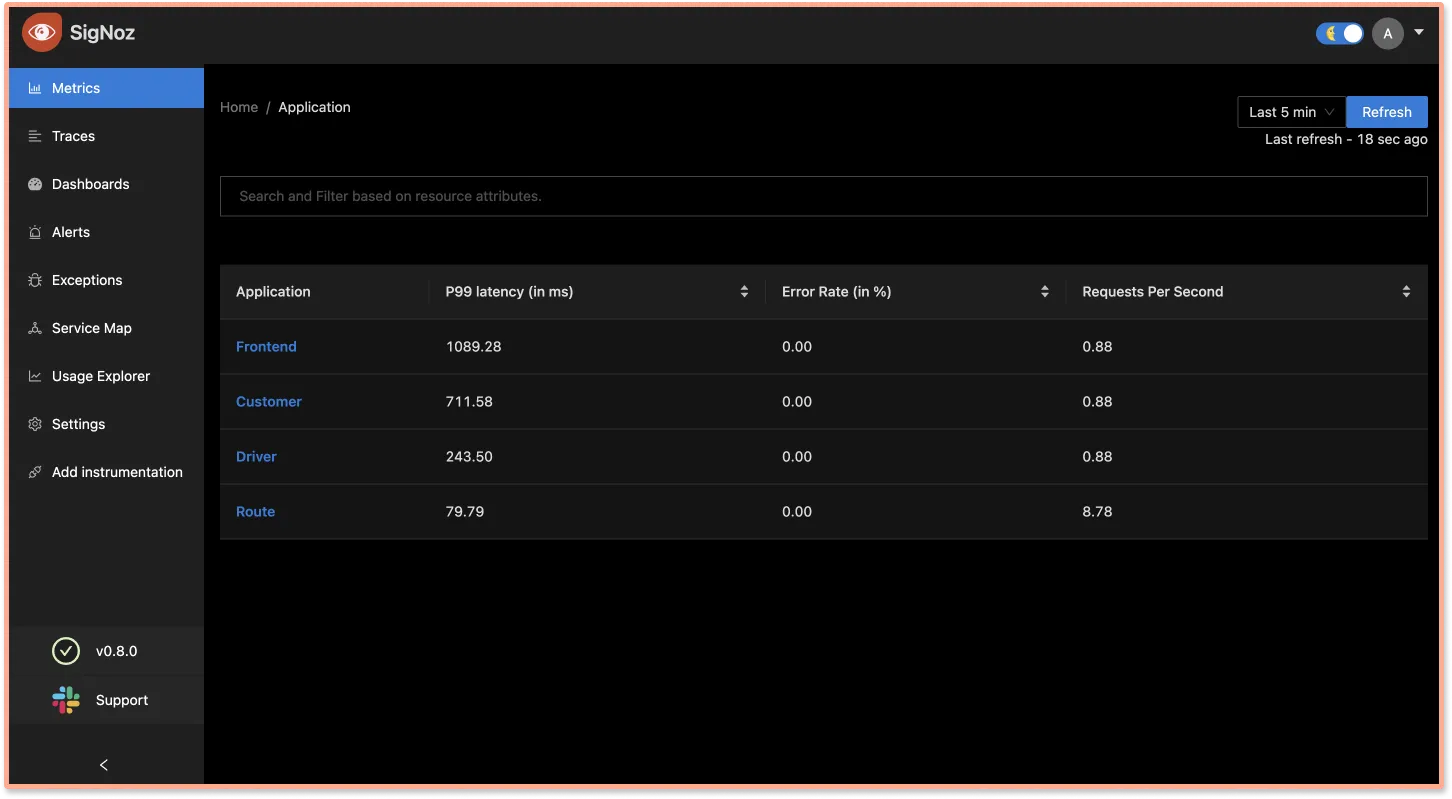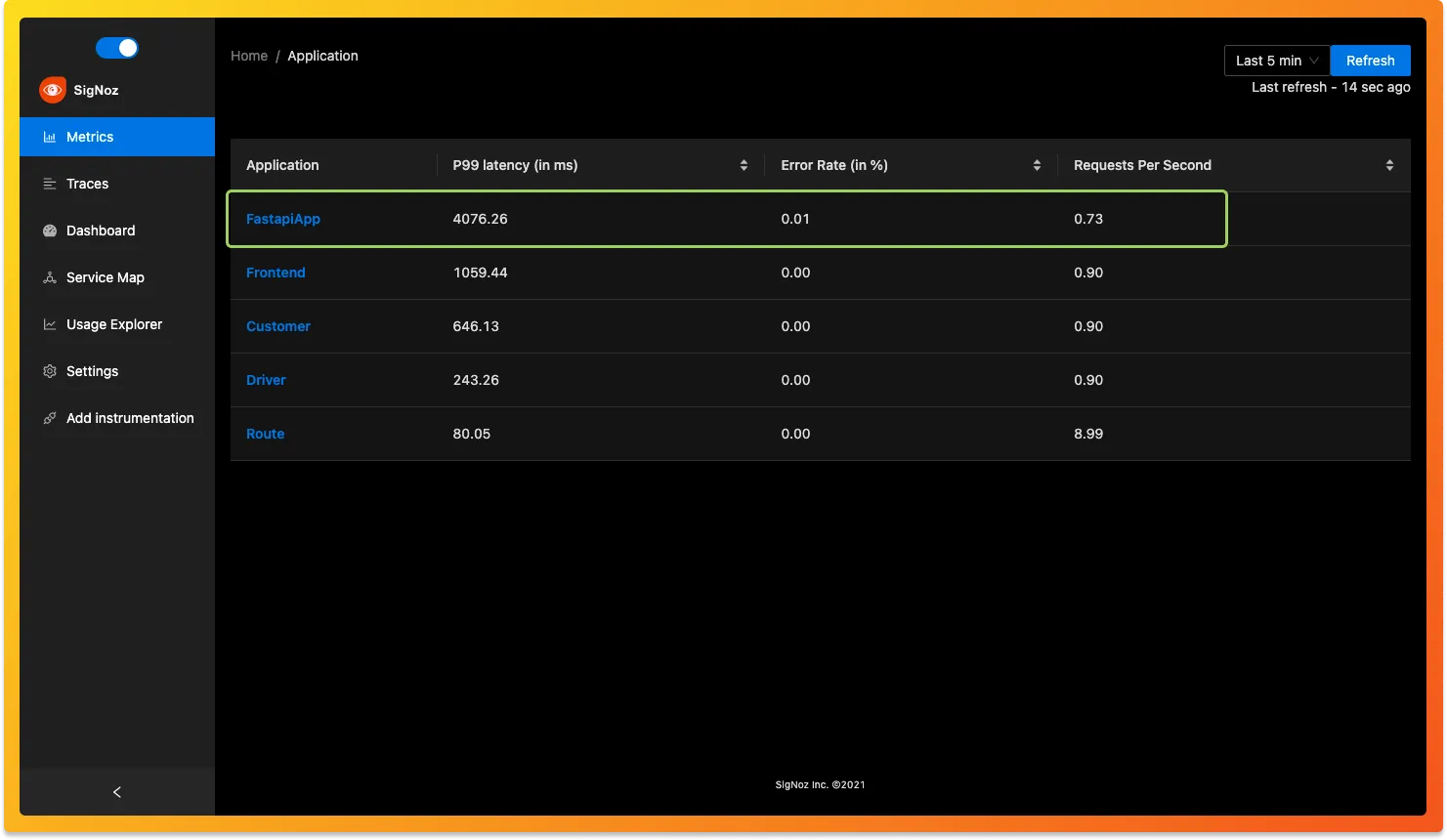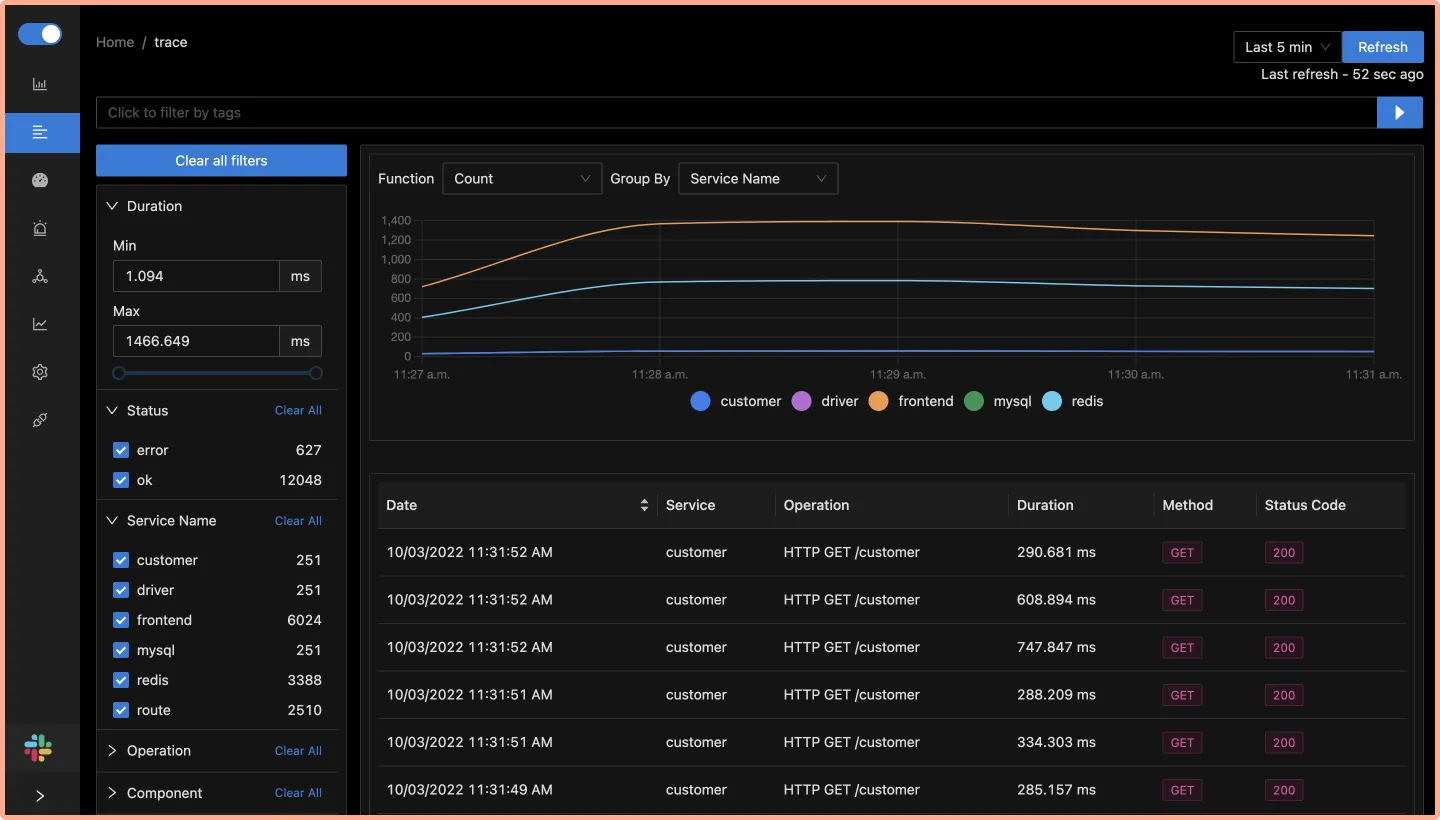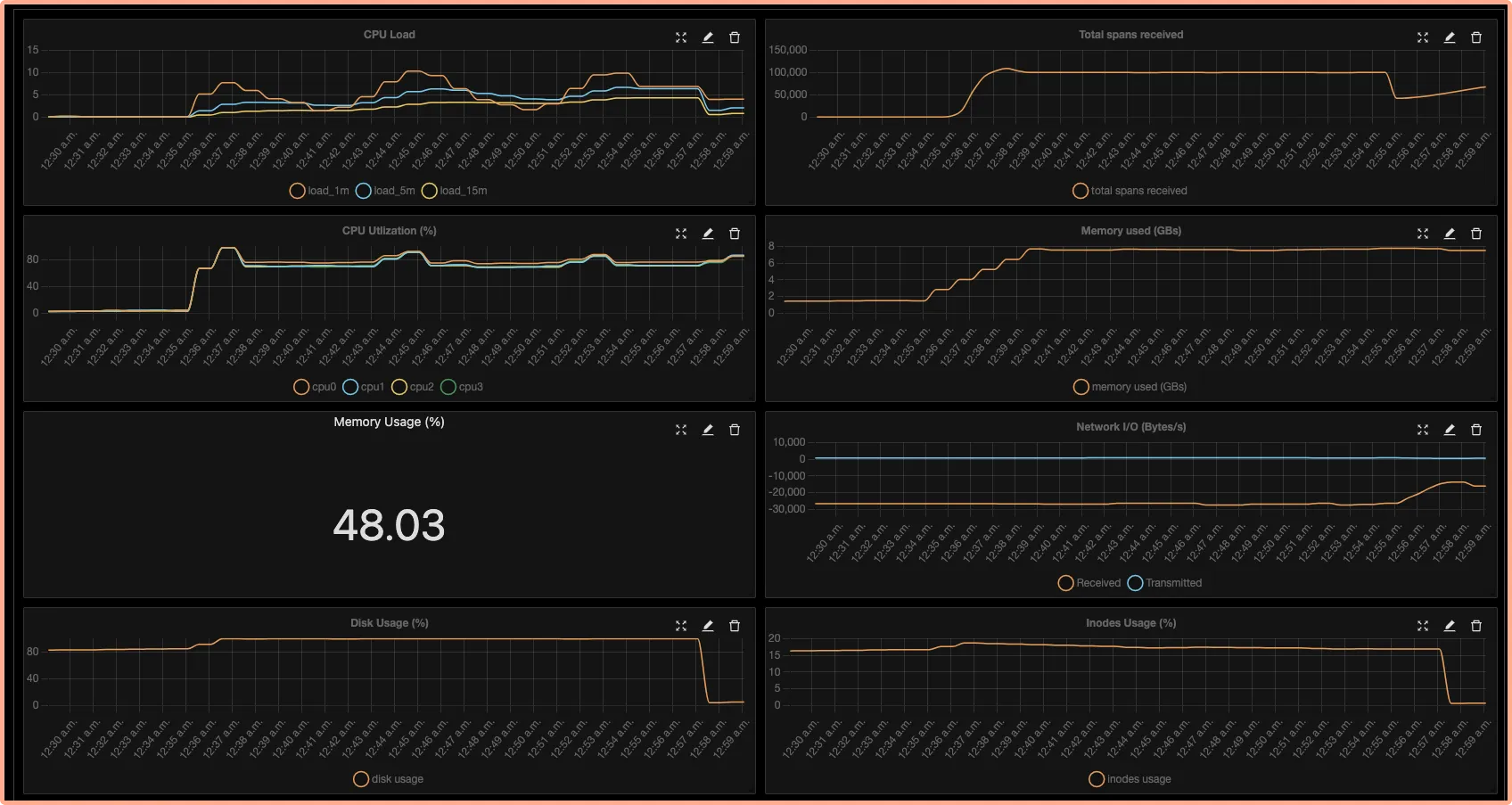FastAPI is a modern Python web framework based on standard Python type hints that makes it easy to build APIs. It's a relatively new framework, having been released in 2018 but has now been adopted by big companies like Uber, Netflix, and Microsoft.

FastAPI is one of the fastest Python web frameworks currently available and is really efficient when it comes to writing code. It is based on ASGI specification, unlike other Python frameworks like Flask, which is based on WSGI specification.
Instrumentation is the biggest challenge engineering teams face when starting out with monitoring their application performance. OpenTelemetry is the leading open-source standard that is solving the problem of instrumentation. It is currently an incubating project under the Cloud Native Computing Foundation.
It is a set of tools, APIs, and SDKs used to instrument applications to create and manage telemetry data(Logs, metrics, and traces). It aims to make telemetry data(logs, metrics, and traces) a built-in feature of cloud-native software applications.
One of the biggest advantages of using OpenTelemetry is that it is vendor-agnostic. It can export data in multiple formats which you can send to a backend of your choice.
In this article, we will use SigNoz as a backend. SigNoz is an open-source APM tool that can be used for both metrics and distributed tracing.
Let's get started and see how to use OpenTelemetry for a FastAPI application.
Running a FastAPI application with OpenTelemetry
OpenTelemetry is a great choice to instrument ASGI frameworks. As it is open-source and vendor-agnostic, the data can be sent to any backend of your choice.
Installing SigNoz
You can get started with SigNoz using just three commands at your terminal.
git clone -b main https://github.com/SigNoz/signoz.git
cd signoz/deploy/
./install.sh
For detailed instructions, you can visit our documentation.
When you are done installing SigNoz, you can access the UI at: http://localhost:3301
The application list shown in the dashboard is from a sample app called HOT R.O.D that comes bundled with the SigNoz installation package.

Instrumenting a sample FastAPI application with OpenTelemetry
Prerequisites
Python 3.6 or newer
Download the latest version of Python.
1. Running sample FastAPI app
We will be using the FastAPI app at this Github repo. All the required OpenTelemetry packages are contained within the requirements.txt file under app folder in this sample app. Go to the app folder first.
git clone https://github.com/SigNoz/sample-fastAPI-app.git
cd sample-fastapi-app/
cd app
Note: We will using a virtual python environment for this sample fastAPI app. Learn how to do it here.
2. Run instructions for sending data to SigNoz
The requirements.txt file contains all the necessary OpenTelemetry Python packages needed for instrumentation. In order to install those packages, run the following command:
pip3 install -r requirements.txt
3. Install application specific packages
This step is required to install packages specific to the application. This command figures out which instrumentation packages the user might want to install and installs it for them:
opentelemetry-bootstrap --action=install
4. Configure environment variables to run app and send data to SigNoz
You're almost done. In the last step, you just need to configure a few environment variables for your OTLP exporters. Environment variables that need to be configured:
service.name- application service name (you can name it as you like)OTEL_EXPORTER_OTLP_ENDPOINT- In this case, IP of the machine where SigNoz is installednote
Don’t run app in reloader/hot-reload mode as it breaks instrumentation.
You need to put these environment variables in the below command.
OTEL_RESOURCE_ATTRIBUTES=service.name=<service_name> OTEL_EXPORTER_OTLP_ENDPOINT="http://<IP of SigNoz>:4317" opentelemetry-instrument uvicorn main:app --host localhost --port 5002As we are running SigNoz on local host,
IP of SigNozcan be replaced withlocalhostin this case. And, forservice_namelet's usefastapiApp. Hence, the final command becomes:Final Command
OTEL_RESOURCE_ATTRIBUTES=service.name=fastapiApp OTEL_EXPORTER_OTLP_ENDPOINT="http://localhost:4317" opentelemetry-instrument uvicorn main:app --host localhost --port 5002
And, congratulations! You have instrumented your sample FastAPI app. You can check if your app is running or not by hitting the endpoint at http://localhost:5002/.
If you have installed SigNoz on your local host, then you can access the SigNoz dashboard at http://localhost:3301 to monitor your app for performance metrics.
You need to generate some load on your app so that there is data to be captured by OpenTelemetry. You can use locust for this load testing.
pip3 install locust
locust -f locust.py --headless --users 10 --spawn-rate 1 -H http://localhost:5002
You will find fastapiAPP in the list of sample applications being monitored by SigNoz.

If you want to run the application with a docker image, refer to the section below for instructions.
Run with docker
You can use the below instructions if you want to run your app as a docker image, below are the instructions.
Build docker image
docker build -t sample-fastapi-app .
Setting environment variables
You need to set some environment variables while running the application with OpenTelemetry and send collected data to SigNoz. You can do so with the following commands at the terminal:
# If you have your SigNoz IP Address, replace <IP of SigNoz> with your IP Address.
docker run -d --name fastapi-container \
-e OTEL_METRICS_EXPORTER='none' \
-e OTEL_RESOURCE_ATTRIBUTES='service.name=fastapiApp' \
-e OTEL_EXPORTER_OTLP_ENDPOINT='http://<IP of SigNoz>:4317' \
-p 5002:5002 sample-fastapi-app
If you're using docker-compose setup:
# If you are running signoz through official docker-compose setup, run `docker network ls` and find clickhouse network id. It will be something like this clickhouse-setup_default
# and pass network id by using --net <network ID>
docker run -d --name fastapi-container \
--net clickhouse-setup_default \
--link clickhouse-setup_otel-collector_1 \
-e OTEL_METRICS_EXPORTER='none' \
-e OTEL_RESOURCE_ATTRIBUTES='service.name=fastapiApp' \
-e OTEL_EXPORTER_OTLP_ENDPOINT='http://clickhouse-setup_otel-collector_1:4317' \
-p 5002:5002 sample-fastapi-app
If you're running SigNoz in your local host then you can replace <IP of SigNoz> with localhost and the final command will look like below:
docker run -d --name fastapi-container \
-e OTEL_METRICS_EXPORTER='none' \
-e OTEL_RESOURCE_ATTRIBUTES='service.name=fastapiApp' \
-e OTEL_EXPORTER_OTLP_ENDPOINT='http://localhost:4317' \
-p 5002:5002 sample-fastapi-app
Open-source tool to visualize telemetry data
SigNoz makes it easy to visualize metrics and traces captured through OpenTelemetry instrumentation.
SigNoz comes with out of box RED metrics charts and visualization. RED metrics stands for:
- Rate of requests
- Error rate of requests
- Duration taken by requests

You can then choose a particular timestamp where latency is high to drill down to traces around that timestamp.

You can use flamegraphs to exactly identify the issue causing the latency.

You can also build custom metrics dashboard for your infrastructure.

Conclusion
OpenTelemetry makes it very convenient to instrument your FastAPI application. You can then use an open-source APM tool like SigNoz to analyze the performance of your app. As SigNoz offers a full-stack observability tool, you don't have to use multiple tools for your monitoring needs.
You can try out SigNoz by visiting its GitHub repo 👇
If you are someone who understands more from video, then you can watch the below video tutorial on the same with SigNoz.

If you have any questions or need any help in setting things up, join our slack community and ping us in #support channel.
Read more about OpenTelemetry 👇
Things you need to know about OpenTelemetry tracing
OpenTelemetry collector - architecture and configuration guide



